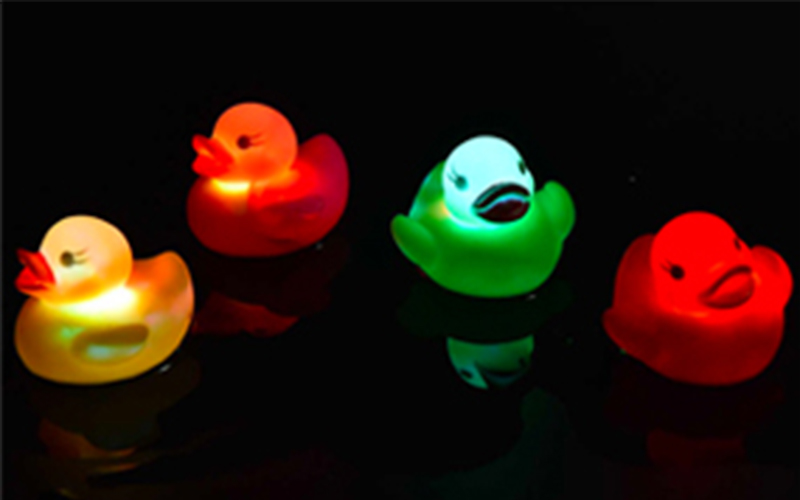This article is part of a continuing series about Cortical Visual Impairment.
We’ve got to stop thinking that there’s a group of people who have needs that are so complex that we shouldn’t think of literacy as a long-term goal for them. – Karen Ericssoni
CVI is not a new condition, but our understanding of what to do about CVI has evolved rapidly over the past decade or so, championed by the publication of Christine Roman Lantzy’s book Cortical Visual Impairment: Assessment and Intervention. As children have been appropriately assessed, and we have embraced improving visual function, print reading has gone from a hopeful possibility, to a reality, to an expectation for many children with CVI. This “path to literacy” is a winding one, and Ellen Mazel offers a reminder that every child will respond to approaches to literacy differently:
When we apply reading methods for our students with CVI, we need to apply methods to the child not decide that all methods work for everyone. We need to be diagnostic. What is working? Why is it working and under what conditions? Is it working at all? What can we do to improve this complex process that includes learning to use vision and to build reading skills?ii
It is important to meet children where they are, by providing supports that allow them to build the visual skills needed to access reading and writing instruction.
How to begin
When should we start with reading, and what prerequisites do children need in order to read? Dr. Roman-Lantzy asserts that we have already started, the moment we encouraged the child with CVI to use their vision. “Literacy begins when they look.”iii This is to say that any type of visual literacy depends on a child’s ability to view and interpret objects, and much of the work we do in Phase I and early Phase II develops early literacy skills. The biggest task at the start is giving children opportunities to view what is meaningful and build a collection of visual memories they can refer to when engaging with things they have never seen before.
Levels of Knowing
As a child’s vision improves, parents will often report that their children show greater and greater attention to objects, and for longer and longer durations. This is an important characteristic of vision and a good marker for improvement. But as an object becomes familiar, we must begin to probe whether the child can not only look at an object, but also interpret what they are seeing. Interpreting includes the ability to understand the meaning of a viewed object by perceiving the details that make the object what it is.iv
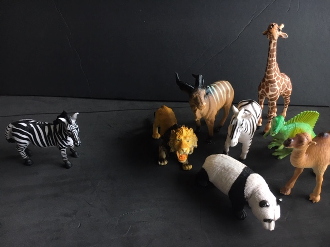
Christine Roman Lantzy outlines three levels of visually “knowing” a familiar object.v The first is Discrimination. If we show a child a zebra figurine, can she select an identical (or similar) figurine among other objects? She is holding the shape, color, and qualities of that zebra in mind while searching for it visually.
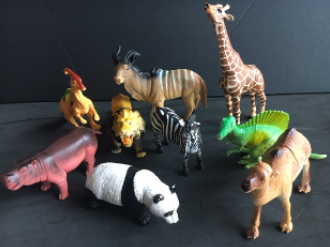
The second level of knowing is Recognition. If we show a child many animals and ask her to find the bear, can she link this word to her own mental image of the zebra and recall its shape, pattern, and qualities without a visual reference? In doing so, she has enough memories about “zebra-ness” or what makes a zebra what it is to remember that shape. In addition, she has linked her visual memory to the word for “zebra.” There is a strong link between language development and continued visual development along the path to literacy.

The third level of knowing an object is Identification. If I hold up a zebra and ask, “What is this?” can a child tell me it is a zebra? By naming the zebra, the child is not just viewing the object, but interpreting its meaning by naming it. This requires deep connections between the visual aspects that make up the bear, and the language that identifies it. (There may be communication barriers to identifying objects in this way, but this kind of communication will help reinforce visual knowledge.)
Salient visual features support literacy
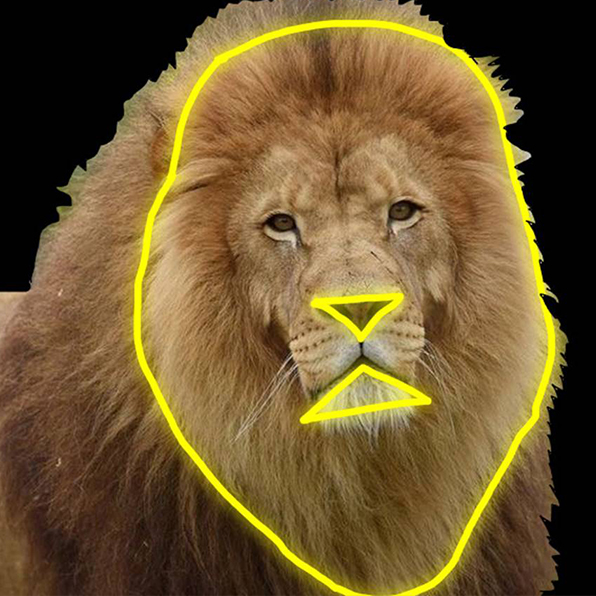
Salient visual features are the irreducible visual qualities that make an object what it is.vi They help the child pair what they are seeing with language that can carry across contexts to support visual development. Once a child has a number of objects that are very familiar and visually stable, the salient visual features of each object can be taught. For example, the salient visual features of a lion might be “long-haired mane, triangle nose and mouth.”
This description may not apply to every single representation of a lion, but it applies to the lion’s share of them. (Sorry for the pun – I couldn’t resist.) Thus, all of the images below are described to some extent by these salient visual features. Armed with this set of features, a child with CVI has a better chance of identifying the lion-like qualities in these pictures, even though some are abstract, some are illustrated, some are black and white, and some feature less conventional perspectives of a lion.
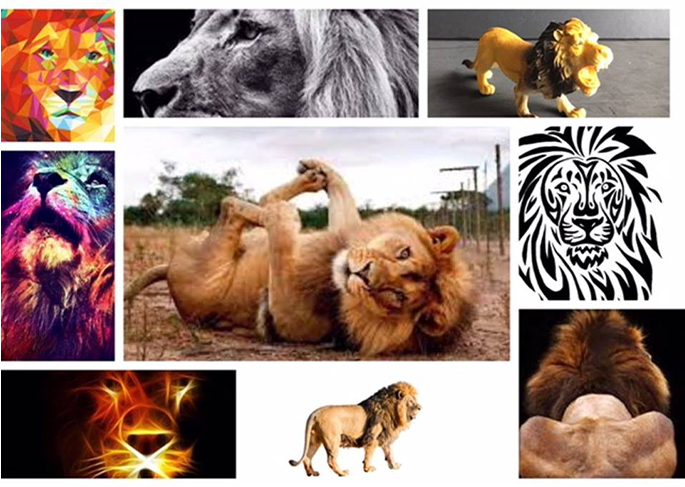
Once the child has a strong understanding of these salient features, they have the tools and the language to apply this knowledge to new situations in which they might encounter a lion. For example, a monkey and a lion are similar in that they both have round ears, but the monkey has a smooth face and short hair, and the lion has whiskers and a long mane.

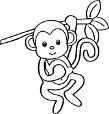
By making this distinction with the child, we are helping her to engage in comparative thought—Use what you know about the visual world to make comparisons to unfamiliar visual objects. While spoken language helps support cognitive development in children with visual impairments, not all language is equal—language should be tailored to the child’s knowledge and experiences.vii
Being able to engage in comparative thought is essential to literacy because as children move to using objects, or symbols, or print as representations of thoughts and ideas, they need to have a process for differentiating and categorizing one symbol from another. This is true when comparing lions and monkeys, when comparing a symbol for snack and a symbol for game, when comparing the letter L and the letter P, and when comparing the shape of the child’s own name to those of her peers.
Early Literacy Tasks
There are many pre-reading activities that can put children on a path to literacy, including:
- Understanding that activities and routines have a beginning and an end
- Understanding that many activities occur in a sequence (first we do this, then that)
- Building anticipation in an activity (we built a tower—give it a push—what will happen?)
- Recognizing a familiar object or character as it appears repeatedly in a picture book (Which one is Elmo?)
- Maintaining attention to a single task across several stages (let’s put all four puzzle pieces in)
- Developing familiarity with an object by viewing it with increasing complexity (with light support, without extra light but isolated on a black background, on varied backgrounds)
- Sorting two, three, or more groups of identical objects by their characteristics (yellow blocks and red blocks)
- Sorting two groups of different objects that belong to a category but are not be identical (seashells and stones, each shell or stone looks slightly different from the others)
- Naming the salient visual features of each type of object (seashells – curved, hollow, thin; stones – round, solid, thick)
- Finding a familiar object among novel objects, or in an unexpected context. (“There are six shells hiding between your toys. Can you find them?”)
- Copying a pattern with familiar objects. (“My pattern is shell – shell – stone. What comes next? Can you make yours look the same?”)
- Creating a themed book with real objects or life-size photos of objects on each page. Then selecting a matching object for each page, or naming each object (This Beach Day book includes stone, shell, bird, umbrella, sunglasses, and ball)
- Make a Book Box!
As Dr. Roman writes, we cannot predict which children will develop the ability to read independently, but all children with CVI are more capable of what they initially demonstrate on their CVI journey.viii We do know that all of the skills learned through the early phases of reading have broad impacts on cognitive development, attention, memory, and participation. Visual attention and recognition to shared reading activities can lay the groundwork to greater success in reading and writing. Yet this is only the beginning of the journey—we should consider the potential for print literacy for all children, particularly those with complex communication challenges, as it can pave the way for more robust options for communication.
Feel free to address questions or comments to Jonathan at jgraves@highhopesdubai.com. Read more from the CVI series:
Staying Home with CVI
One word at a time: A literacy approach for children with CVI
What does the future look like for children with CVI?
Making progress with vision using a CVI schedule
What is cortical visual impairment?
